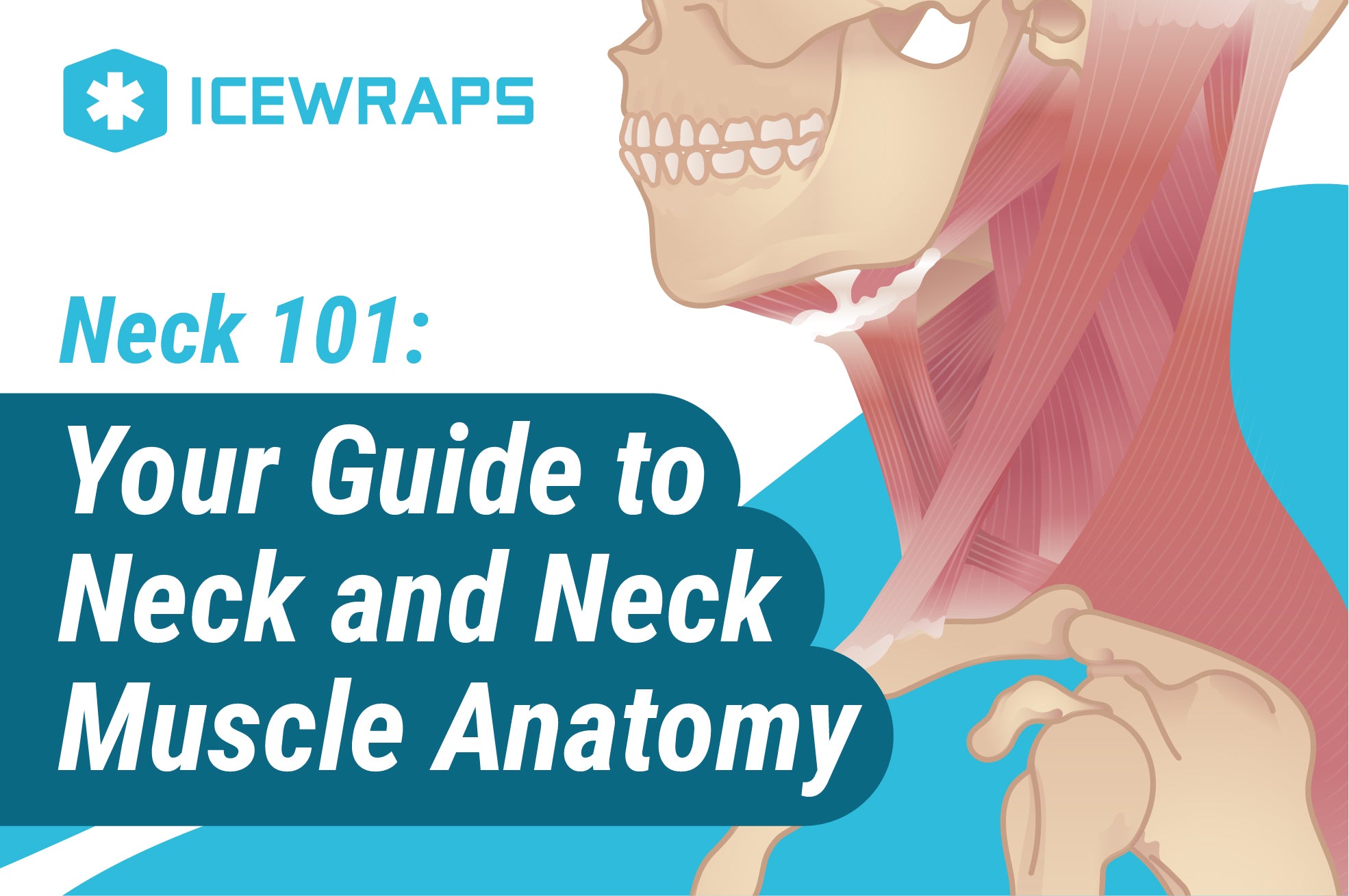Your Cart is Empty

Did you know that the average head weighs 5 kg? That’s around 11 pounds, making it heavier than most newborn babies!
Imagine the neck supporting all that weight while keeping your head mobile. What makes this body part all the more impressive is that it also houses crucial structures like the:
Want to learn more about the cervical spine? This neck and neck muscle anatomy guide will fill you in on what you need to know.
(Featured image vector from www.injurymap.com)
The anatomy of the neck has two main structures: triangles and compartments.
The triangles are located in the outer division, while compartments make up the inner division. Each triangle has its own nerves, vessels, and muscles, and the compartments contain cervical fascia (connective tissues) in varying layers.
Let’s take a closer look at each part:
There are two main triangles in the neck: anterior (front) and the posterior (back) triangles. When combined, they form a quadrangular shape.
The anterior triangle of the neck is bounded:


Carotid triangle
Submandibular triangle
Posterior Triangle
Now, for the posterior triangle. This triangle makes up the lateral part of your neck and is bounded:
Photo from Teach Me Anatomy
The structures in the posterior triangle include several muscles, nerves, and veins.
One neck muscle you should be familiar with is the omohyoid. Why is it significant? Well, it’s responsible for breaking up the posterior triangle into two — you guessed it — triangles.
The occipital triangle is the bigger and superior part. Nerves like the accessory nerve (CN XI) as well as branches of the brachial plexus and cervical plexus are in this triangle. Thanks to these nerves, you can shake your head, shrug, and move your hands and arms.
The smaller triangle has different names. It's known as the subclavian triangle but it's also called the supraclavicular or omoclavicular triangle. Like the occipital triangle, it has branches of the brachial plexus. But its other structures include lymph nodes, the subclavian artery, and the subclavian nerve.
Check out the next section to learn about other important muscles of the neck.

Photo from Lumen Learning
Neck muscles play a role in moving your head, neck, shoulders, and upper back. Unlike muscles in your heart and stomach, they only work when you decide to use them. This makes them voluntary muscles.
Now, your neck has over 20 muscles. They’re classified into 3 groups based on their location (anterior, posterior, or lateral).
The anterior neck muscles include:

Photo from Encyclopedia Britannica
Meanwhile, the posterior neck muscles include:

Photo from NCBI
Lastly, here are the lateral muscles of the neck:


Photo from Basic Medical Key
Connective tissues called fasciae surround your neck and separate them into compartments.
While there are several fasciae in the body supporting your nerves, vessels, and muscles, the neck has two specific kinds: superficial cervical fascia and deep cervical fascia.
The superficial cervical fascia stays right under your skin. It’s thinner than fasciae in other places, and it contains structures like platysma, cutaneous nerves, and superficial lymph nodes and veins.
Below this fascia, you’ll find the deep cervical fascia. It’s actually the one responsible for compartmentalizing the neck’s structures. The fascial layers that make up the deep fascia all support its structures and vessels. These include the investing, pretracheal, and prevertebral layers.
Since you’re now familiar with the types of fasciae, let’s discuss the compartments of your neck. There are four of them in total:
The reason is simple — your neck is one of the most hardworking parts of your body. It literally carries your head, protects your spinal cord, and helps your brain get enough blood flow.
Everyday activities like driving in traffic, reading books, and texting can cause repeated stress to your neck. Over time, this may impact your way of life.
By knowing its anatomy, you can take better care of your neck. That’s because you have an idea of where the pain is coming from.
Make your workplace comfortable
Sitting for long periods of time can lead to a stiff neck. But you can avoid it by keeping your back straight and your feet firmly planted on the ground. It also helps to take regular breaks from sitting. Stand up for a few minutes every hour and do stretches.
Change how you use your phone
When you’re always on your phone, you’re not only harming your eyesight; you’re also straining your neck muscles. To avoid text neck, you can either use your phone less or hold it level to your eyes.
Use a hot or cold pack
Does your nape feel sore whenever you have a stressful workday or an intense workout? Neck pain relief products from IceWraps can quickly soothe it. We have an ice clay pack that’s specifically designed to target neck and shoulder pain.

|
|
ICEWRAPS EXTRA LARGE NECK ICE PACK WITH SOFT COVER |

|
Rethink your sleeping position
Certain sleeping positions may hurt your neck more than others. If you lie on your stomach, that might be the reason for your stiff neck. It puts more pressure on your neck compared to when you sleep on your sides or back.
Your neck is the bridge between your head and the rest of your body. It’s in charge of tilting and moving your head, and it also helps your heart transport blood to your brain.
You’re not exempt from neck pain, whether you’re an athlete or working a desk job. It’s a pretty common ailment. But with small lifestyle changes and cold therapy, you can ease it.
If you need neck pain relief, IceWraps has exactly what you’re looking for! We’re your one-stop shop for everything hot and cold therapy.
Comments will be approved before showing up.